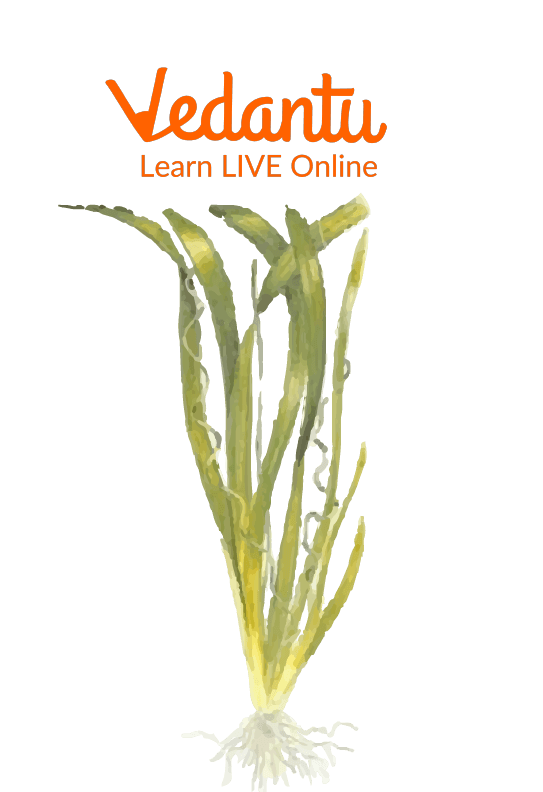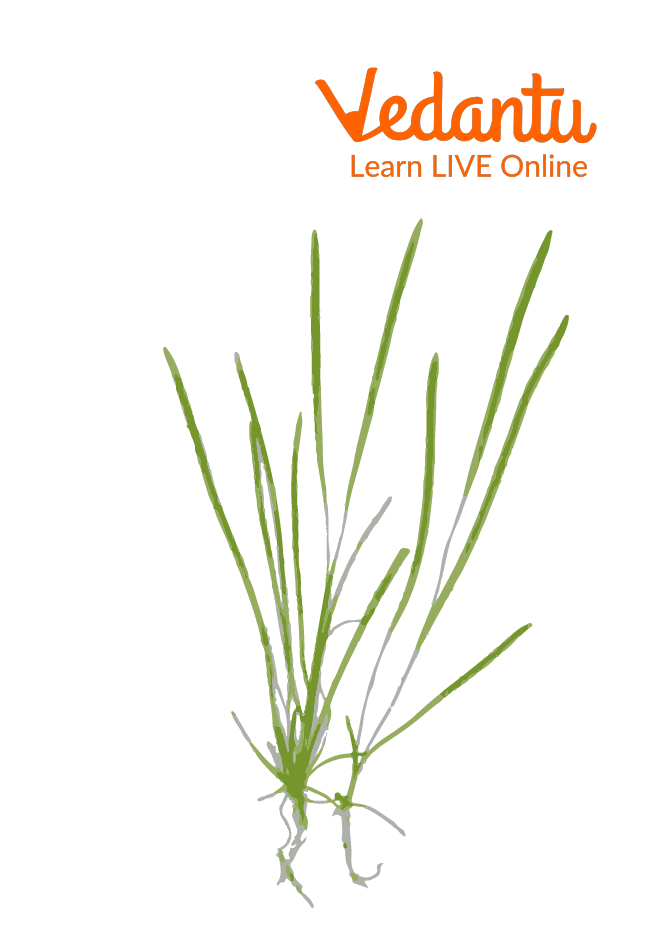Key Features and Ecological Role of Vallisneria Plant
Vallisneria is a typical aquarium plant. It's a tall rosette-type plant that's easy to propagate and was one of the first plants used in the aquarium hobby. It's still one of the most common and easiest to cultivate plants today. Vallisneria, a member of the Hydrocharitaceae family, is linked to a number of other common aquatic plants, including anacharis, frogbit, and najas. Tape grass may be utilised as an aquarium plant in fish tanks, as well as to restore lakes, estuaries, and natural settings.
Vallisneria Plant
Vallisneria americana michaux's common names include tape grass and wild celery. It is also known as eelgrass, which can be mistaken with certain seagrass species with the same common name. It is endemic to Florida and is regarded as a vital species in aquatic ecosystems owing to its capacity to provide sediment stability, water clarity, food and habitat for aquatic creatures such as fish and invertebrates, as well as big mammals such as manatees.
The existence of aquatic invasive species, which can have significant ecological and economic consequences, is one of the principal causes of change in freshwater ecosystems across the world. Aquatic invasive plants, for example, can 're-engineer' freshwater habitats by displacing native vegetation, modifying the structure of the food web, altering hydrochemistry and boosting primary production and sedimentation.
Tape grass is a submerged aquatic plant that spends its entire life cycle underwater, with the exception of pollination, when the female flower reaches the water's surface. The leaves grow in rosette clusters and range in colour from green to brownish-red; they can grow up to 6 feet long and 1 inch broad. Although some kinds have curled leaves, normally, the leaves are flat and narrow with serrated borders and rounded ends.
Tapegrass reproduces both asexually (through runners or stolons) and sexually (by winter buds; via seeds). Tape grass is prevalent in the southern United States, such as Florida and is prone to asexual reproduction. Tape grass may readily occupy an area because of runner reproduction. Northern climate varieties can produce both runners and winter buds. Winter buds, also known as tubers or turions, store energy and assist the plant in surviving the winter.
Common Name of Vallisneria
Tapegrass, eelgrass, wild celery, water celery, eel weed and duck celery.
Family of Vallisneria
Hydrocharitaceae, in the alismatales order, is a monocotyledonous flowering plant family that includes a number of aquatic plant species known as tape grasses, including the well-known Canadian waterweed (elodea canadensis) and water thyme (hydrilla verticillata), and is widely distributed in tropical and subtropical regions. Freshwater and marine aquatics from a wide range of environments are included in the family. Plants can be either annual or perennial, floating or submerged. Stems can be short or long and they can be stoloniferous. Vallisneria flower leaves can be radical or cauline, whorled, opposite or alternating and come in a variety of shapes. Flowers are actinomorphic or zygomorphic, bisexual or unisexual. Stamens range in number from one to several. The ovary is subpar. Fruit functions like a capsule. The embryo is erect and the seeds are exalbuminous.
Vallisneria Taxonomy
Kingdom: Plantae
Division: Angiospermae
Class: Monocotyledoneae
Order: Alismatales
Family: Hydrocharitaceae
Genus: Vallisneria Linn.
Species: Vallisneria natans
Vallisneria Gigantea
Vallisneria sp. Gigantea from Asia is a simple plant that grows quickly and is ideal for big aquariums. The leaves in most aquariums grow so long that they float on the surface (50-150 cm, 2 cm wide). As a result, the plant requires trimming to prevent it from stealing too much light from the plants developing beneath it. Since the leaves are thick and sturdy, herbivorous fish do not consume them.
Vallisneria gigantea prefers calm waters such as lakes and slow-flowing streams, as well as fresh to brackish waters in streams, lakes, rivers and bays from sea level to 500 metres. It is a natural submerged plant with long ribbon-like leaves that come up from the pond's bottom.
Vallisneria gigantea is typically found in tropical and subtropical aquariums. It is a low-maintenance, fast-growing plant that is best suited to bigger aquariums. Vallisneria gigantea is also a nice plant for discus tanks and deep tanks like cubes if enough light is available. It can be used to conceal filters and other pieces of equipment. It is useful for water oxygenation.

Image: Vallisneria gigantea
Vallisneria Spiralis
Vallisneria spiralis 'Tiger' from Asia is a great plant for novices since it grows in almost any light and water conditions. The name 'tiger' comes from its striped leaves (30-50 cm long, 1-2 cm wide). Its short leaves make it ideal for tiny aquariums, and the leaves are also thin, so it does not dominate smaller plants. It quickly forms runners and is hence simple to disseminate.

Image: Vallisneria Spiralis
Aquarium Plant Vallisneria
Vallisneria is a traditional aquarium plant that has delighted both experienced and inexperienced aquarists for years. It is also one of the most common and widely available plants in the aquarium hobby.
Vallisneria's reputation as an old reliable is well justified since it is the least demanding and simplest to care for plants in the genus.


FAQs on Vallisneria Plant Explained: Structure, Adaptations & Functions
1. What are the key structural features of the Vallisneria plant?
Vallisneria is a submerged, freshwater aquatic plant with several distinct features:
- Leaves: It has long, thin, ribbon-like or tape-like leaves that grow from a basal rosette.
- Roots: The plant is rooted in the substrate of ponds, lakes, or slow-moving streams.
- Reproductive Nature: It is a dioecious plant, meaning male and female flowers are produced on separate plants.
- Flowers: The small, inconspicuous female flowers are borne on long, slender stalks that reach the water surface, while male flowers are produced near the base of the plant.
2. How is pollination accomplished in Vallisneria?
Pollination in Vallisneria is a fascinating example of epihydrophily (pollination on the water surface). The male plant releases its tiny flowers, which float to the surface. The female plant's flower, which is at the water's surface on a long stalk, creates a small depression. The floating male flowers are passively carried by water currents and fall into the depression, coming into contact with the stigma to achieve pollination.
3. Why does the female flower of Vallisneria have a long, coiled stalk?
The long stalk is a critical adaptation that allows the female flower to reach the water's surface, the precise location where it can intercept the floating male flowers. After successful pollination, the stalk coils up like a spring. This coiling action retracts the fertilised flower underwater, providing a safe, submerged environment for the fruit and seeds to develop, away from birds and other surface disturbances.
4. How is the water pollination in Vallisneria different from that in seagrasses like Zostera?
The key difference lies in the location of pollination. Vallisneria exhibits epihydrophily, where pollination occurs on the surface of the water. In contrast, Zostera (a marine seagrass) exhibits hypohydrophily, where pollination happens entirely underwater. The pollen grains of Zostera are long and ribbon-like and are released into the water to be carried to the stigma of a female flower, all beneath the surface.
5. Are all aquatic plants pollinated by water? Explain with reference to Vallisneria.
No, it is a common misconception that all aquatic plants use water for pollination. Many aquatic plants, such as the water hyacinth and water lily, have flowers that emerge above the water surface. These flowers are pollinated by insects or wind, just like many terrestrial plants. Vallisneria, however, is a true example of a hydrophilous plant, as it is one of the few species that relies entirely on water as its pollinating agent.
6. Besides sexual reproduction, how does the Vallisneria plant propagate?
Vallisneria primarily propagates vegetatively through runners, also known as stolons. These runners extend horizontally from the base of the parent plant along the substrate. New plants then sprout at nodes along these runners, allowing a single plant to quickly colonise an area and form a dense underwater meadow. This is its most common method of spreading in an aquarium or natural habitat.
7. What are the common names for Vallisneria and what do they signify?
Vallisneria is widely known by several common names that describe its appearance. The most frequent names are 'Tape Grass' or 'Ribbon Grass', which refer to its long, flat, ribbon-like leaves. It is also commonly called 'Eelgrass' because its leaves resemble the shape of eels and it provides a habitat for them in the wild.










